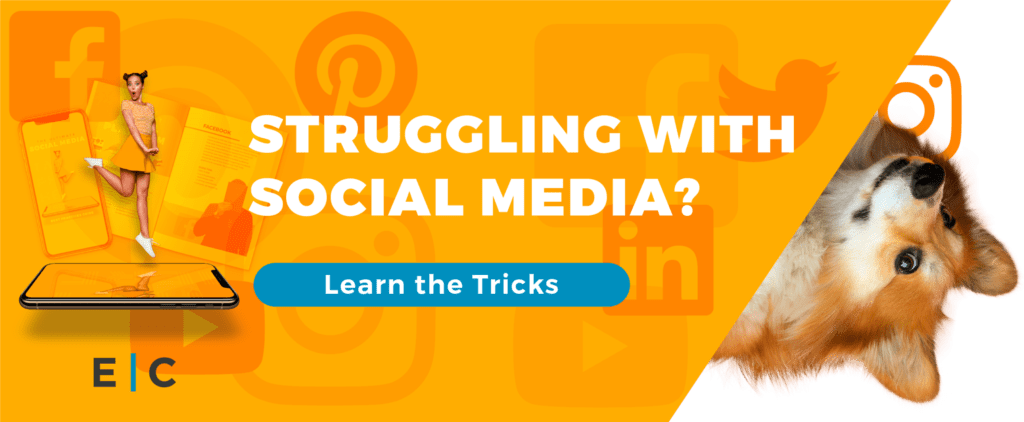It’s somewhat mind-boggling to think about, but just 10 years ago social media management was considered to be a complete novelty by many mainstream professionals. Now, in 2017, it’s considered vital by marketing agencies around the world.
Knowing that social media should be a part of your marketing strategy is one thing, but actually developing and managing a campaign is a whole other issue. Here are some essential tips that will help you build and implement a strong social media management plan:
- Establish campaign goals
- Know where your audience is congregating
- Lay out a plan of action
- Evaluate with metrics and use your tools
- Know when to outsource your social media management
1. Establish Campaign Goals
First, you need to establish what success means for your brand. Take the time to lay out your goals, being as specific as possible. Then, more importantly, determine how those goals will be measured.
In a nutshell, your goals should be SMART, meaning they fit these five criteria: Specific, Measurable, Attainable, Relevant, and Timely.
Examples of bad and good goals:
Bad: Drive website traffic.
Good: Increase website traffic by 20% within 3 months.
Bad: Be more socially involved.
Good: Increase engagement by 30% in 2 months.
Bad: Be a thought leader.
Good: Share 3 pieces of custom content each day that is industry-specific.
2. Know Where Your Audience Is Congregating
There are hundreds of social media channels on the Internet. To properly manage your time and create an effective campaign, you need to identify the platforms where your ideal customers are gathering.
How? Use pre-existing analytics, conduct some proactive research, consider performing a survey and/or monitor online conversations. Monitoring tools, such as Mention.net or HubSpot, allow you to be notified of conversations within certain topic areas. You’ll be able to make data-driven decisions regarding which platforms to focus on, as well as identify the type of content that will be beneficial to your audience.
If possible, you should go a step beyond determining your “target audience” by creating buyer personas. A buyer persona is a composite picture of a specific slice of your target audience; in essence, it’s a snapshot of your ideal customer, defining not just their demographics, but also their personality, interests, and pain points. Buyer personas are the best ways to begin gathering highly-targeted audience insight.
3. Lay Out A Plan Of Action
- Establish some parameters, including how often you plan to post each day and how your brand’s voice should be perceived.
- Determine what you are going to say and how you will say it. What type of content does your audience want to hear and what type of content are you comfortable publishing?
- Focus on creating conversations and refrain from self-promotion. Ask questions, share current news, ask for opinions and promote new ideas.
- Create a social media-friendly culture within your business by creating an internal social media strategy that allows your entire team to help promote the brand image and drive conversations.
- The biggest industry thought leaders openly recognize and share valuable content, even when it’s not their own. Establish an arrangement of content resources for your team.
4. Evaluate With Metrics, Use Your Tools
Just like traditional marketing, social media management should be performed with an eye to data analysis, never losing sight of your goals. There are numerous avenues for gathering and analyzing data:
- Facebook, Twitter, Instagram, LinkedIn, YouTube and Pinterest all offer analytics that show follower growth, engagement, most popular posts and much more.
- Google Analytics and other website analytics tools show you the sources of your website traffic, including organic and social traffic. This is extremely helpful in identifying the platforms that work best for your brand.
- Many sites, like Hootsuite and Sprout Social, offer free and paid versions of their software, which enable you to plan out your posts ahead of time, monitor activity, and build aesthetically pleasing reports.
- Advanced marketing software platforms, such as HubSpot and Marketo, have the ability to combine all of the above features into a holistic marketing campaign.
Checking your data often will not only allow you to track your progress, but also help you identify the weaknesses and strengths in your social media plan.
5. Know When to Outsource Your Social Media Management
Social media management is a full-time job that can often require more than one person. Many businesses start out managing their accounts internally but quickly realize they lack the time, resources, and personnel to operate effectively. An agency can offer resources with greater breadth and value. You can essentially have an entire social media team—including strategists, graphic designers, copywriters, paid traffic specialists, and content curators—that costs less than a single full-time employee.
Before considering partnering with an agency to manage your social media, it’s important to set specific expectations and determine where your brand truly falls short on social media. Is your problem that you’re not posting enough or is it audience engagement? It is generating website visitors or creating sales leads? From there, an agency can connect the dots and help turn your social presence into a brand experience that’s both engaging for followers and effective for your business.
-FINAL(01-00)-White&Blue-01.svg)





